keyglyph
14 posts
computer beige nostalgia waves // ✨30s // they/them
Don't wanna be here? Send us removal request.
Text
Why the Pokéwalker Was So Awesome
With pokéwalkers being so pricey on eBay these days, I'd guess that most of these little pedometers have gone missing since they debuted sixteen years ago. That may not seem like a big loss, but if you've ever spent time with one, you know how carrying a pokéwalker meant far more than just knowing the number of footsteps you'd taken in a day. I absolutely adore mine and spend a lot of time thinking about it, so let's reflect together on how special and surprisingly immersive these tiny devices were, both as an extension of the imagination and a brilliant blending of the game world with real life.
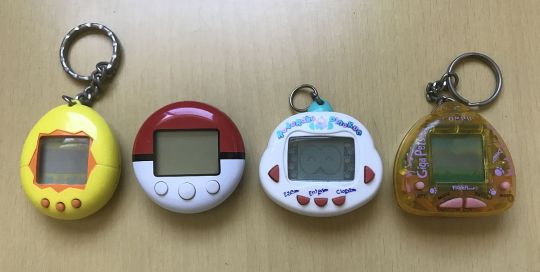
From left: Tamagotchi, Pokéwalker, Dinkie Dino/RakuRaku Dinokun, GigaPets CompuKitty
As a stand-alone device, the pokéwalker (second from left above) was similar in size to the handheld digital pets of the 90s. Disc-shaped and two inches in diameter, the steps you took with this in your pocket contributed to the happiness of whichever pokémon was housed inside, as well as built up a kind of currency ("watts") you could use to play simple minigames for uncovering items and other pokémon. Two pokéwalkers could also communicate directly with each other, allowing your pokémon to have a basic interaction with a friend's. These came packed in with copies of HeartGold and SoulSilver in 2009 and were compatible exclusively with those games.
The pokéwalker was not the first virtual pet device to support connections with other handhelds of the same type, nor was it the first to allow the transfer of unique and specific character data back and forth between itself and an associated video game; the Sega Dreamcast VMU did both in 1998 with the Chao of Sonic Adventure, for example.
What made it so special, however, was how every single detail about it 1) supported the immersive fantasy that each pokémon was a distinct individual with a unique personality and history, and 2) enriched your fictional bond with them by extending them, diegetically, into your real-world activities.
All of this was intentional and so, so clever.

A Nintendo DS screen prompt during a pokémon transfer to the pokéwalker.
In terms of supporting the fantasy that your pokémon are all unique individuals, your pokéwalker starts off vacant until you yourself choose a specific monster from your own game's save file to transfer into it. This means that it's not just some random rattata or anorith in there -- it's your anorith, that shiny one with the Sassy nature you still can't believe you got at Oreburgh Museum that one afternoon, whom you've named, thought up a backstory for, traded over from Pearl, and have had following your trainer in HeartGold ever since, etcetera.*
*Please note that it is also possible for a random pokémon to join you in your pokéwalker if you keep it empty for a while. That pokémon then walks with you and can be transferred into your cartridge later on, just as if they'd followed you home from some tall grass in the real world!
After you pick your special pokémon, you’re prompted to select the "route" you want to walk on -- usually a locale based on some combination of nature, weather, and habitat type -- which primarily affects which items and random encounters you'll come across in the two minigames. The Nintendo DS then transfers your pokémon’s data from the cartridge to the pokéwalker via infrared connection, and you’re off! (Your chosen partner even “disappears” from your game's storage boxes while they’re out and about with you, further adding to immersion that they’re a singular creature who's truly moved from one place to another.)


Selecting a pokémon and route for a pokéwalker stroll.
As soon as they've settled into their portable home, you can start checking in with your pokémon to see how they're doing in much the same way you do in the HeartGold/SoulSilver games themselves. If you wake your pokéwalker out of sleep mode while someone is traveling with you, they might weigh in with some thoughts on how they're feeling, look at you expectantly, or show you an item they've found.
The pokéwalker also displays a tiny image representing the route you're on, shows your pokémon moving as you walk, and provides several other small, thoughtful details that keep you invested in your buddy and your time together.
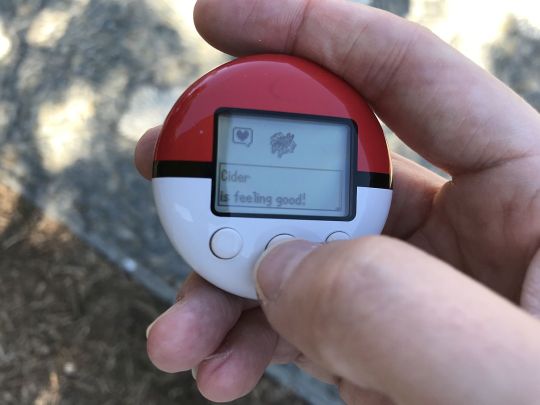

Cider is feeling good on the Warm Beach route! Just look at that cute face. 🤎
And in terms of imaginatively extending them into your real life, when you see your pokémon cheering happily on that LCD screen from all the walking you're doing or zoning out from boredom because you've been sitting still too long, it's almost impossible to keep yourself from pretending that they're right there with you as you go about your day.
There's nothing like imagining you're walking into your university library with a Ho-Oh in tow, or that your onix is curled up politely around your elliptical while you work out at the gym. I cannot overstate how fun this is.
And to top it all off, when you transfer your pokémon back into your cartridge, the game brings everything full circle by giving you a journal-style summary of your stroll together. In this way the distinction between you and your in-game trainer effectively dissolves. The journey you have in Johto with the pokémon in your party and the things you do in the real world with those same partners in your actual pocket, inside a perfect representation of a pokéball -- everything becomes one continuous narrative. Nothing contradicts the immersion or takes away from it. And your pokémon become even more special and distinct to you because of that.






Various journal entries recounting a stroll with my anorith. Even the times of day and terrain are reflected in these recaps, and any found items are transferred into your inventory!
It's nothing short of phenomenal how a device this simple was designed to be so imaginatively deep. I keep hoping we’ll see a low-tech reboot of them one day, or that someone out there will reverse-engineer the original hardware and create a bunch of physical clones (something slightly smaller and suited for a watchband would be a dream).
And now that I've been carrying mine for over a decade, I'm at the point where it feels weird if I'm ever anywhere without it. It's just a continuous part of my mental landscape, imagining my pokémon out in the world with me. And I just love it for that.

<3
6 notes
·
View notes
Text
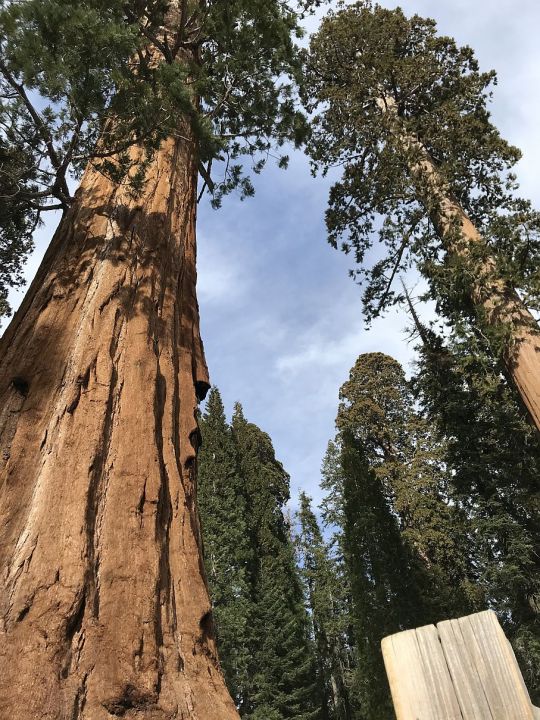
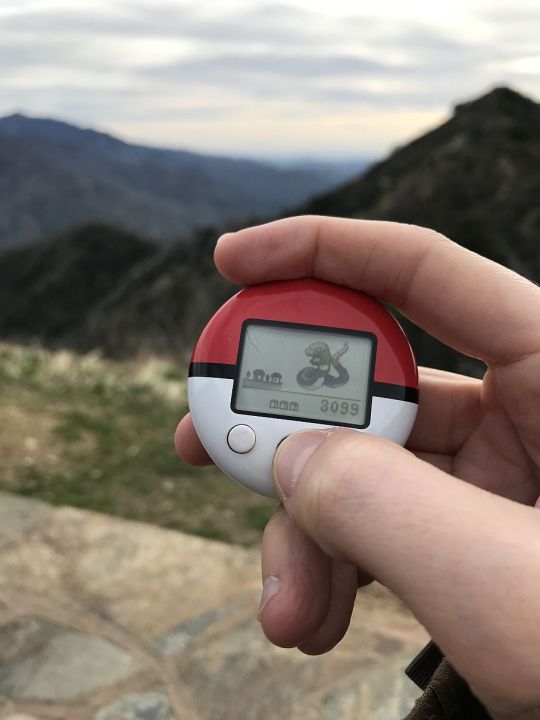

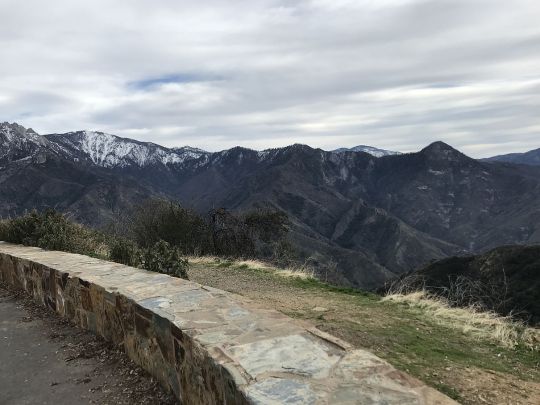
Year of the Snake adventures. This past spring at Sequoia National Park. 🐍✨
3 notes
·
View notes
Text


a coffee shop worker who chats with "regulars" (lost souls) and helps them move on into the afterlife 👻☕
218 notes
·
View notes
Text


Side-by-side comparison of daytime shiny patches in Pokémon Diamond (top) and Pokémon Platinum (bottom).
Diamond/Pearl patches are always brighter and more eye-catching to me, especially at night -- but the outward pop of Platinum patches does make them easier to see on routes with rough weather.
Both have their advantages! Do you have a favorite?
Footage recorded via Nintendo DS Capture Board; edited with ScreenToGif.
#pokeradar#shinypatch#shiny hunting#dppt#gen iv#my gifs#poke radar#pokemon diamond#pokemon pearl#pokemon platinum#mine
2 notes
·
View notes
Text
Now that we have new Limozeen music, the full Limozeen album can’t be too far behind
72 notes
·
View notes
Text
Shiny Chaining Circa 2010
I've been catching shinies with the poké radar in the gen IV Pokémon games for a long time now, and it's wild to think about how niche and mysterious the chaining process was for most of us back in the earlier days.
I've been reminiscing about this a lot on my own lately, so why not reminisce together?

The concept of chaining has appeared in a handful of Pokémon games since its introduction in Diamond and Pearl, but wow did things get off to a cryptic start! The only in-game hints in Diamond and Pearl that the chaining mechanic even existed -- at least so far as I was aware -- were 1) a few lines of nonchalant NPC dialog and 2) the Trainer Counter pokétch app.
In regards to the NPCs, if you visit Sandgem Town post-game and speak to Lucas or Dawn, they'll ask you how things are going with the poké radar and then casually drop that the grass patches that shake farthest away from you will have the highest chances of containing consecutive repeat pokémon. Neat, you think. Something to keep in mind if you want to save time seeking out a particular nature or doing some EV training or something.
But then if you pick up the Trainer Counter pokétch app too, you're like, okay, there must be something else to encountering the same species of pokémon over and over again in a row, because why else would the game be putting this much effort into tracking it?

Naming this the "Trainer Counter" didn't make anything clearer, unfortunately.
But the really intriguing bit happens when Lucas or Dawn -- and again, this is expressed to you in just one or two lines of optional post-game dialog with a character you may not be particularly inspired to check up on -- makes an offhand comment about a "sparkling" grass patch that sometimes shows up when you use the poké radar. They claim that these patches will have a different-colored pokémon inside but then quickly reframe this as perhaps more rumor than fact by ending on a wistful, "I wonder if that's true?"
It was this mention of a sparkling grass patch that stuck in my mind enough (read: adhesed forever) that on the random day in 2008 when I was stunned by the appearance of one -- at an incredibly low chain, before I even knew what chaining was -- I was able to make the connection and understand what I was seeing. But from that point on, all of my knowledge about chaining, shiny or otherwise, came from the fan sites, LiveJournal posts, and YouTube videos I found when I started searching the internet to see if other people had experienced this phenomenon too.
And just to fully set the scene here, the only -- only -- footage of an actual shiny patch I was aware of in those days was this two-second YouTube video. There were no gifs or other screenshots to reference anywhere. Eventually more videos would follow from folks setting up their digital cameras or DV camcorders to film over their shoulders, but for a few years the shiny Pokémon LiveJournal community I'd joined had to live with the ongoing subdermal dread of, "Even if I do this whole laborious process right and it actually works, what if a shiny patch happens and I don't recognize it?" If you'd never seen one in your game before, how could you be sure you'd know?

So of course now that we have Nintendo DS capture devices, I'm obsessed with making these.
Fan-made written guides for shiny chaining did exist by the time I was looking into things in 2010, and I specifically remember using an earlier version of this Smogon University guide to wrap my head around the process. But I would love to know the story behind the folks who originally dug through the game's code and pulled out this information, because I just can't get over how a game mechanic this robust -- robust enough to be its own minigame with its own custom animations and BGM tune, which directly and secretly affected shiny odds -- was barely explained in any official capacity at the time.
I cracked open my Pearl and Platinum manuals and my Diamond/Pearl Official Prima Game Guide Volume 1 just to make sure there wasn't something about chaining in either place that I'd somehow overlooked. Not only is there not, but there is no mention of the poké radar at all, and the Game Guide doesn't include the Trainer Counter app in its pokétch section. I suppose this makes some amount of sense since the poké radar isn't given to you until you've finished the main storyline, but still. Pretty interesting.

The pokétch pages in the Prima Game Guide Volume 1.
That said, I can't speak to what is or isn't in the Prima Game Guide Volume 2. I should grab a copy for research purposes. 😄 And I will also note that in Platinum, which came out two years after Diamond and Pearl, Lucas or Dawn will give you a short demonstration of how to use the poké radar... but they really don't give you any new information beyond what was already said in Diamond and Pearl. They certainly don’t mention a relationship between chain numbers and shiny odds. They just spell out the process a little more clearly, show you some actual rustling grass, and suggest that you buy some repels. Helpful, yes. But still barely scratching the surface!
So now what about you? When and how did you learn about shiny chaining? What were your experiences with the poké radar in gen IV? Was there some official information out there that I missed back in the day? Replies are welcomed!
Footage recorded via Nintendo DS Capture Board; edited with ScreenToGif.
#poke radar#shinypatch#shiny pokemon#shiny hunting#gen iv#gaming thoughts#dppt#my gifs#pokeradar#pokemon diamond#pokemon pearl#pokemon platinum#mine
2 notes
·
View notes
Text

Recreating our beach day in-game 😄 Still experimenting with encoders and settings to crank out the crispest gifs, so there are some strange artifacts here and there... but I think it's kinda charming this way. Footage recorded via Nintendo DS Capture Board; edited with ScreenToGif.
#shiny pokemon#hgss#gen iv#cherrygrove city#gastrodon#my gifs#pokemon heartgold#pokemon soulsilver#mine
2 notes
·
View notes
Text
Knew I'd be visiting the ocean a few times lately, so one of my beloved gastrodon had to come with 🤎

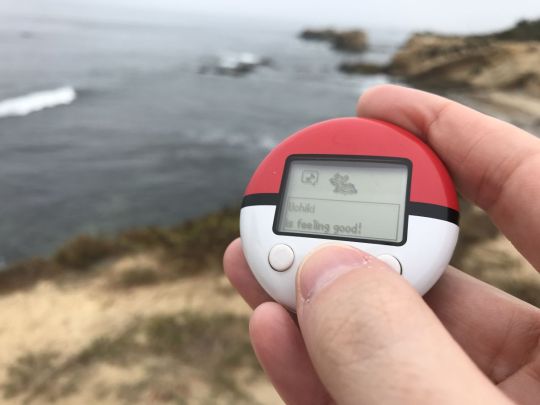
9 notes
·
View notes
Text

🐬🌠The marks on your head look like stars in the sky 🐬🌠 Ok, but why was Ecco the Dolphin such an absolute vibe??
212 notes
·
View notes
Text

Welcome to my most consistent source of video game dopamine for the past fourteen years. That Gen IV Diamond/Pearl shiny patch just never loses its zing. Footage recorded via Nintendo DS Capture Board; edited with ScreenToGif.
#pokeradar#shinypatch#shiny hunting#dppt#gen iv#p.s. it was gastrodon#my gifs#poke radar#pokemon diamond#pokemon pearl#mine
6 notes
·
View notes


